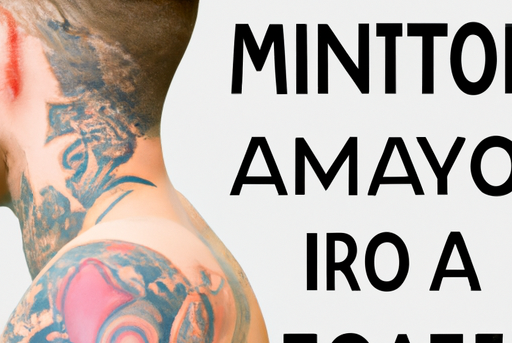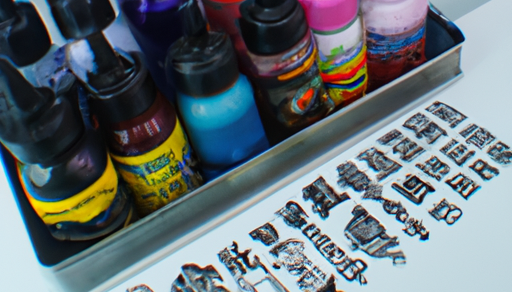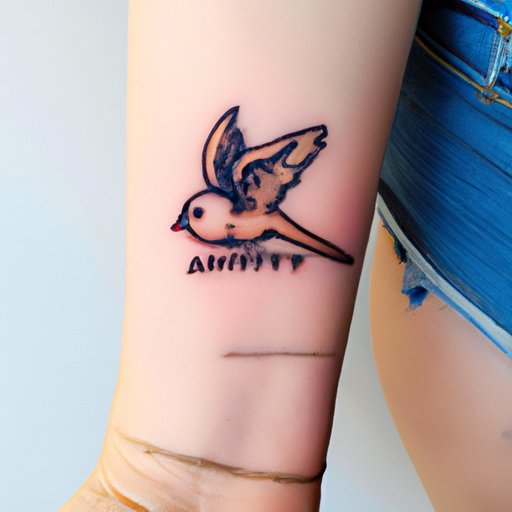Tattoos are a popular form of body art, but sometimes they may no longer represent what you want. Fortunately, tattoo removal is now possible with various methods available. This post will provide you with a brief overview of
the most common tattoo removal methods.
Tattoo Removal: Laser Tattoo Removal
Tattoos are a popular form of self-expression and art, but sometimes they may no longer represent who we are or what we want. Fortunately, laser tattoo removal has become an increasingly popular option for those who wish to erase their tattoos. In this blog post, we will explore what laser tattoo removal is, how it works, and what to expect during the process.
What is Laser Tattoo Removal?
Laser tattoo removal is a medical procedure that uses a high-powered laser to break up the tattoo ink particles in
the skin. The laser emits pulses of light that are absorbed by the tattoo ink, causing the ink to fragment into small particles that can be removed by the body’s immune system over time. The process is repeated until the tattoo is completely faded or removed.
How Does Laser Tattoo Removal Work?
The laser used in tattoo removal is typically a Q-switched Nd : YAG laser, which emits short bursts of energy at a specific wavelength that can be absorbed by the tattoo ink. The laser energy breaks down the ink particles into smaller fragments, which are then absorbed by the body’s immune system and eliminated through natural processes.
During the procedure, the tattooed area is first cleaned and a topical anesthetic is applied to minimize any discomfort. The laser is then applied to the tattooed area, and patients may feel a mild discomfort or sensation of heat during the procedure. The duration of the procedure depends on the size and complexity of the tattoo, and multiple sessions are usually required to achieve the desired results.
What to Expect During and After Laser Tattoo Removal?
During the laser tattoo removal procedure, patients may experience some discomfort or pain, which can be managed with topical anesthetics or ice packs. After the procedure, patients may experience some redness, swelling, and scabbing in the treated area, which can be managed with ointments and bandages.
It’s important to follow the aftercare instructions provided by the tattoo removal specialist, such as avoiding sun exposure, wearing loose clothing, and avoiding swimming or soaking the treated area for a few days. Patients should also keep the area clean and dry, and avoid scratching or picking at the scabs.
Is Laser Tattoo Removal Safe and Effective?
Laser tattoo removal is generally considered safe and effective, but there are some risks and limitations to consider. The procedure may cause some pain, scarring, or changes in skin pigmentation, especially in individuals with darker skin tones or sensitive skin. It may also take multiple sessions to achieve the desired results, and complete removal of the tattoo may not be possible in some cases.
However, laser tattoo removal is still considered the most effective and least invasive method of tattoo removal, and it has a high success rate in fading or removing tattoos. It’s important to choose a qualified and experienced tattoo removal specialist who uses state-of-the-art equipment and follows safety protocols.
Tattoo Removal: Intense Pulsed Light (IPL) therapy.
IPL therapy is a non-invasive treatment that uses high-intensity light energy to break down the ink particles in a tattoo. The light energy penetrates the skin and targets the pigment, causing it to break down into smaller particles. These particles are then naturally absorbed and eliminated by the body’s immune system.
The benefits of IPL therapy for tattoo removal are numerous. One of the most significant advantages is that it is a non-invasive procedure, which means that there is no need for surgery or incisions. This reduces the risk of scarring and infection, and there is no downtime required, meaning that patients can return to their regular activities immediately after treatment.
Another benefit of IPL therapy is that it is effective on a wide range of tattoo colors, including black, blue, green, and red. Unlike other tattoo removal methods, IPL therapy does not rely on specific wavelengths of light to target specific colors, making it a versatile treatment option.
The number of treatments required for tattoo removal by IPL therapy varies depending on several factors, including the size and complexity of the tattoo and the patient’s skin type. In general, most patients require multiple sessions to achieve optimal results, and each treatment session typically lasts between 15 and 30 minutes.
After treatment, patients may experience some mild redness and swelling in the treated area, but this usually subsides within a few hours to a few days. Patients are advised to avoid sun exposure and wear sunscreen to protect the treated area from UV damage.
Tattoo Removal: Surgical Excision
Surgical excision is a procedure in which the tattoo is surgically removed from the skin. This method is typically used for smaller tattoos or those that are located in a specific area of the body. During the procedure, a local anesthetic is used to numb the area, and then the tattoo is carefully removed using a scalpel.
One of the benefits of surgical excision is that it is a one-time procedure. Unlike other tattoo removal methods that may require multiple treatments, surgical excision can often be completed in a single session. Additionally, the results of surgical excision are usually immediate, with the tattoo being completely removed from the skin.
However, there are also several drawbacks to surgical excision. One of the most significant is that it can leave a scar. Depending on the size and location of the tattoo, the scar may be more or less noticeable. Additionally, surgical excision is typically more expensive than other tattoo removal methods, and the recovery period can be longer.
Another consideration when choosing surgical excision as a tattoo removal method is the potential for complications. In some cases, the wound may become infected, or excessive bleeding may occur. It is essential to follow all post-operative instructions and to report any unusual symptoms to your healthcare provider.
Tattoo Removal: Chemical Peels
Chemical peels are a popular cosmetic procedure that involves applying a chemical solution to the skin to remove the outer layers, revealing smoother and younger-looking skin. In the case of tattoo removal, a chemical peel can also help fade or remove the tattoo.
The process of tattoo removal by chemical peels involves applying a special solution directly to the tattoo. The solution penetrates the skin, breaking down the pigments in the tattoo ink. Over time, the tattoo fades, and in some cases, it may disappear entirely. The number of chemical peel treatments required will depend on the size and complexity of the tattoo.
One of the benefits of chemical peels for tattoo removal is that they are non-invasive. Unlike other methods, such as surgical excision or laser removal, chemical peels do not require any incisions, which means there is less risk of scarring. Chemical peels also do not require anesthesia, and there is no downtime required, meaning patients can return to their normal activities immediately after the procedure.
However, chemical peels may not be suitable for everyone. Individuals with dark skin or a history of keloid scarring may not be good candidates for chemical peels, as the procedure may increase the risk of scarring or discoloration. Additionally, chemical peels may cause some discomfort or pain during the procedure, and patients may experience redness or peeling of the skin for several days following treatment.
Tattoo Removal: Dermabrasion
Dermabrasion is a procedure that uses a special tool to remove the top layer of skin, revealing smoother and younger-looking skin. In the case of tattoo removal, dermabrasion can also help fade or remove the tattoo.
The process of tattoo removal by dermabrasion involves using a special tool to “sand” away the top layer of skin that contains the tattoo ink. The procedure is typically performed under local anesthesia to minimize discomfort. Over time, the tattoo fades, and in some cases, it may disappear entirely. The number of dermabrasion treatments required will depend on the size and complexity of the tattoo.
One of the benefits of dermabrasion for tattoo removal is that it is an effective method for removing tattoos with deep ink pigmentation. Unlike some other methods, such as chemical peels, dermabrasion can penetrate deeper layers of the skin, allowing it to target the tattoo ink more effectively. Additionally, dermabrasion can help to smooth out any irregularities in the skin caused by the tattoo, resulting in a smoother and more even skin tone.
However, dermabrasion may not be suitable for everyone. Individuals with dark skin or a history of keloid scarring may not be good candidates for dermabrasion, as the procedure may increase the risk of scarring or discoloration. Additionally, dermabrasion can cause some discomfort or pain during the procedure, and patients may experience redness or peeling of the skin for several days following treatment.
Tattoo Removal: Salabrasion
Salabrasion is a traditional method that involves using salt and water to remove a tattoo. While this method is not commonly used today, some people still prefer it due to its simplicity and affordability.
The process of tattoo removal by salabrasion involves creating an abrasive solution of salt and water and applying it directly to the tattoo. The salt helps to scrub away the top layer of skin that contains the tattoo ink, allowing it to fade over time. The process is typically performed under local anesthesia to minimize discomfort. The number of salabrasion treatments required will depend on the size and complexity of the tattoo.
One of the benefits of salabrasion for tattoo removal is that it is a simple and affordable method. Unlike some other methods, such as laser removal or surgical excision, salabrasion can be performed using materials that are readily available at home. Additionally, salabrasion does not require any special equipment or medical training, making it accessible to a wider range of people.
However, salabrasion may not be suitable for everyone. It is an abrasive method that can cause some discomfort or pain during the procedure, and patients may experience redness or peeling of the skin for several days following treatment. Additionally, salabrasion may not be as effective as other methods for removing tattoos with deep ink pigmentation or complex designs.
Tattoo Removal: Conclusion
Tattoo removal is a popular practice, and there are various methods available for removing tattoos. Laser tattoo removal is the most popular and effective method, but other methods, such as IPL therapy, surgical excision, chemical peels, dermabrasion, and salabrasion, are also available. The choice of method depends on the size, complexity, and location of the tattoo, as well as the individual’s skin type and sensitivity. If you’re considering tattoo removal, it’s important to consult with a qualified professional who can advise you on the best method for your particular situation.






